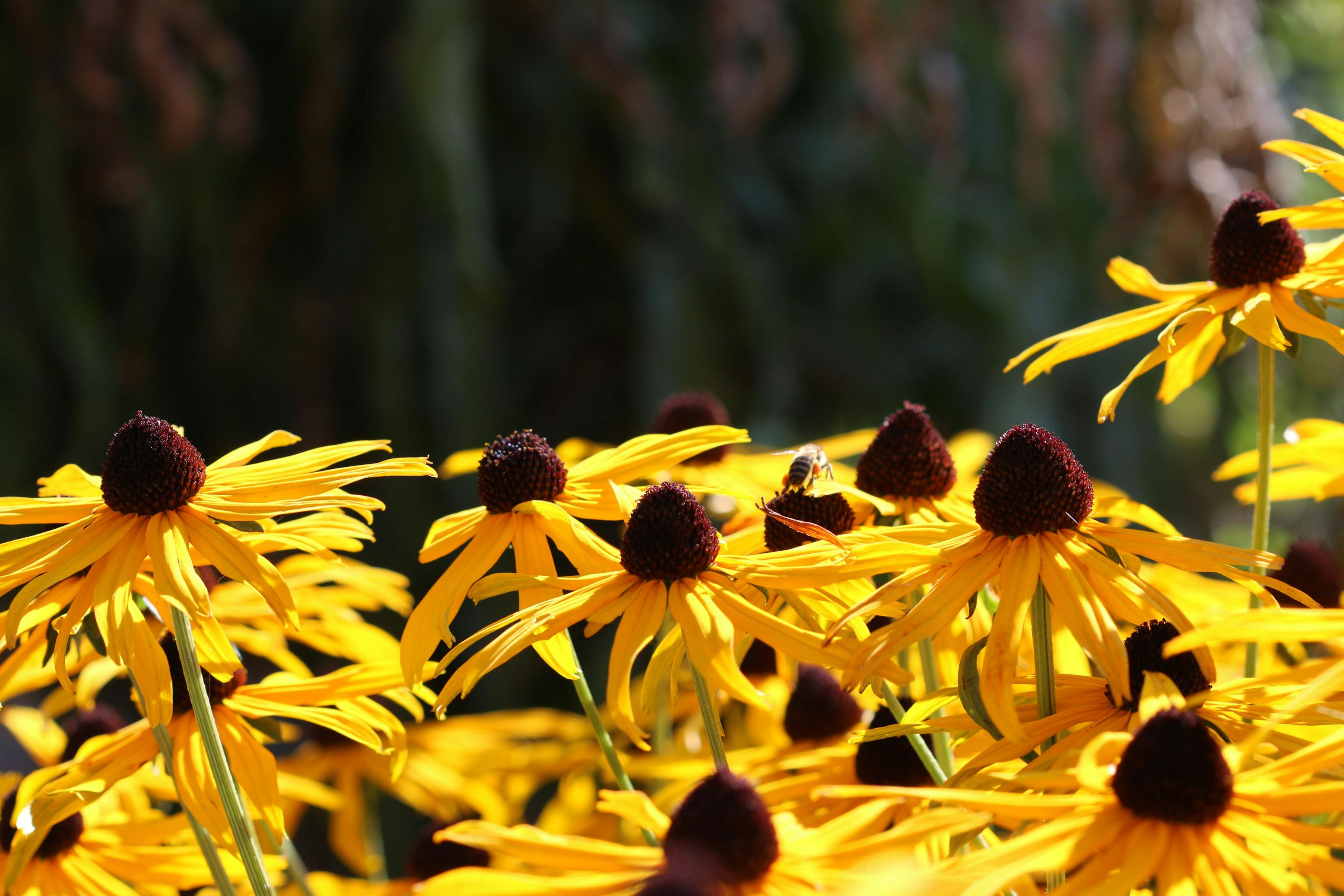
October is full-swing preparation for the winter, fruit and veggies should be brought in and stored, and plants that aren’t hollow should be cut back, wrapped up or brought into the warmth and shelter to help them survive chilly temperatures.
Here is our list of things to keep the garden humming along, enjoying the changing days, different lights and wind down of the year.
Cut flowers + Nectar flowers
- Collect the last of your summer flower seeds, to save and sow for next spring.
- Sow sweet peas now for stronger plants that will flower 6 weeks earlier than spring-planted ones.
- Clear spent flowers and add them to the compost heap if space allows.
- Take advantage of soft ground and weed thoroughly, ensuring to remove the entire root to prevent overwintering.
- Bring in fragile plants like pelargoniums to protect them from frost and cut them back for next year.
- Divide overcrowded plants, such as echinacea.
- Continue planting spring bulbs, taking advantage of the warm ground.
- Plant pots of small bulbs like crocus, iris, and muscari for a burst of spring color. Water during dry spells, but avoid waterlogging.
- Save seed heads for winter and Christmas arrangements.
- Clear and store plant supports that are no longer needed for the season.
- Prune climbing or rambling roses after flowering. Tie back stems to protect from autumn winds, remove damaged or dead parts, and cut side shoots back by two-thirds. Clear fallen leaves to prevent diseases.
- Plant evergreen shrubs or climbers.
Garden Greens
- Any Tom Thumb peas can be cut to the ground, leaving their roots in the soil to be dug over.
- You can sow broad beans this month for early pickings in May next year.
- Dig over your veg beds as the crops are finished. Cold weather can often break down any big clumps of soil, leaving good drainage ready for sowing.
- Cover any productive salad plants like salad rocket or perpetual spinach.
Garden Herbs
- Sow winter herbs like coriander and parsley in containers. Get a 20cm pot, with great drainage holes in the bottom, fill with compost and sow your seeds. Cover the pots, to enclose the moisture and put them somewhere warm to germinate.
- Plant out any hardy herbs if you would like in a south-facing spot.
- Continue to grow herbs inside, chives, parsley, and mint all will do well on a sunny windowsill.
Harvesting
If you were a wise plum then you’ll have a plate full of fresh goodness this year, if not you are just as wise to start now so we have included our links to our seed shop for next year.
- Garden Greens: Carrots, Rocket, Spinach, Buttercrunch Lettuce and Tomatoes
- Edible Flowers: Violas, Chamomile, Cornflowers and Alyssum.
- Garden Herbs: Parsley, Coriander, Mint and Thyme
- Cut Flowers: Poppy Shirley Doubles and Poppy Pandora.
- Nectar Flowers: Nigella Love in a Mist
Odd Jobs
- Try to keep your garden free of fallen leaves. If you have room, you can store them in a leaf mould bag, dampen the bag and store for a year for the perfect leaf mould.
- Keep up with clearing your lawn to avoid brown patches, if you have room you can make leaf mould bags or pile them into the compost.
Check any newly planted plants are secure and firm ready for a few gusts of autumn wind. - If you have grass, cut it as close to the ground as you can. Especially if you have bulbs in the soil as then in spring you will see them much clearer.
- Insulate your cold frame for extra protection from the chills.
When clearing, or having a bonfire keep an eye out for hibernating hedgehogs or small mammals. - Start planning your next year's garden, perhaps take photos, and make a painting. It’ll be hard to remember once it is all gone! Think about what you liked, what didn’t work and start thinking about what you would like to add next year.
- Take a trip to your favourite garden - or one of ours and think of what is growing well and what you’d like to add to your garden.